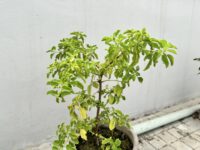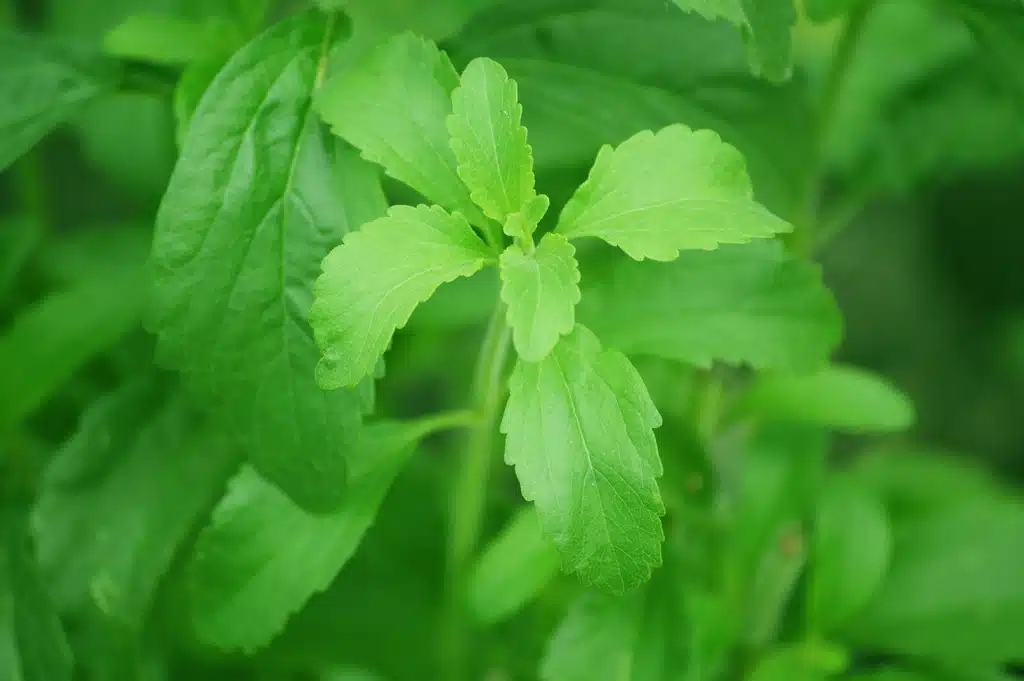Stevia is a plant-based sweetener derived from the leaves of the Stevia rebaudiana plant, which is native to South America. For centuries, indigenous people in Paraguay and Brazil used stevia leaves to sweeten teas and traditional foods. Today, it has become a popular natural alternative to sugar, especially among people looking to reduce their calorie intake or manage blood sugar levels.
What Makes Stevia Special?

Stevia stands out because it is hundreds of times sweeter than regular sugar, yet it contains almost no calories. This makes it an excellent choice for those seeking to enjoy sweetness without the health drawbacks associated with sugar. Unlike artificial sweeteners, stevia is derived from a natural source, making it appealing to those who prefer plant-based and clean-label ingredients.
Forms of Stevia
Stevia is available in several forms:
- Whole Leaves – Dried or fresh leaves can be used to naturally sweeten drinks and dishes.
- Powdered Extract – Highly concentrated, easy to use in recipes, and often used in packaged foods.
- Liquid Drops – Convenient for beverages, smoothies, and baking.
Each form varies in sweetness and usage, so it’s important to follow recommended quantities to avoid bitterness.

Health Benefits of Stevia
Stevia offers multiple health advantages:
- Zero Calories: Ideal for weight management and low-calorie diets.
- Blood Sugar Management: Safe for people with diabetes, as it does not spike blood sugar levels.
- Dental Health: Unlike sugar, stevia does not promote tooth decay or cavities.
- Antioxidant Properties: Contains compounds that may help reduce inflammation and protect cells from damage.
Using Stevia in Cooking and Baking
Stevia can replace sugar in many recipes, including:
- Beverages such as tea, coffee, and smoothies
- Baked goods like cakes, cookies, and muffins
- Sauces, dressings, and marinades
Since stevia is sweeter than sugar, only a small amount is needed. It’s recommended to start with a small quantity and adjust according to taste. Some recipes may require blending stevia with other ingredients to maintain texture and volume.
Growing Stevia at Home
Stevia is relatively easy to grow in your backyard or in pots:
- Climate: Prefers warm, sunny locations. Cannot tolerate frost.
- Soil: Well-draining, fertile soil with slightly acidic to neutral pH.
- Watering: Keep soil moist but not waterlogged.
- Propagation: Best grown from cuttings rather than seeds for higher success rates.
- Harvesting: Leaves can be harvested when the plant matures. Drying the leaves increases their sweetness.
Growing your own stevia allows you to have a fresh, natural supply of sweetener at your fingertips while adding greenery to your garden.
Tips for Maximum Sweetness
- Harvest leaves just before the plant flowers, as sweetness is highest then.
- Dry leaves slowly in a shaded area to preserve flavor.
- Store dried leaves in airtight containers to maintain potency.
- HyperOS 3 in India: Rollout Begins! New Features, AI Upgrades, and Eligible Devices
- Aaj Ka Rashifal: Daily Rashifal, 20 November 2025
- Firozabad का AQI: हवा में घुला ‘जहर’! 20 November 2025
- OPPO Find X9 Pro Review: The 200MP Telephoto Camera and 7,500mAh Battery
- Firozabad का AQI: हवा में घुला ‘जहर’! 19 November 2025
Conclusion
Stevia is a versatile, natural, and calorie-free sweetener that has stood the test of time. Whether used in drinks, cooking, or home remedies, it provides a healthier alternative to sugar. Growing stevia at home is simple and rewarding, giving you access to a natural source of sweetness all year round.
- iPhone 17 Pro Max Launch Date: 10 Reasons to Wait for iPhone 17 Series
- How to buy a perfect jacketcoat trouser | Josforup
- क्या BRICS देश मिलकर अपनी मुद्रा बना सकते है?
- Best Website Speed Test
- JPG to PNG to WEBP converter
- Convert Any File Into PDF
- Facts About Tomatoes That You May Not Know
- Age Calculator
- Vicky Kaushal & Katrina Kaif Announce Pregnancy: A New Chapter Begins
